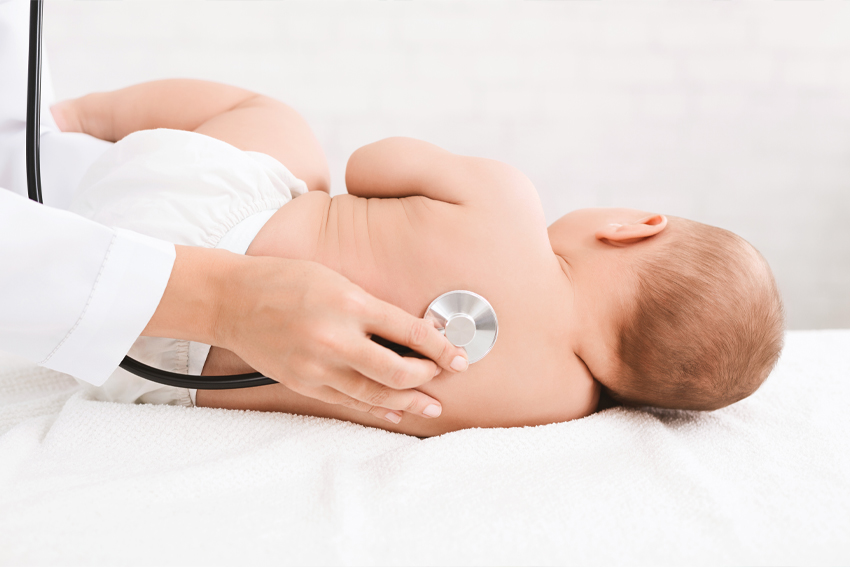Pneumonia in Children - Treatment and Diagnosis
Pneumonia in Children – Treatment and Diagnosis. While pneumonia can be life threatening to people of all age groups, it is riskier when infants or children are infected with it. Pneumonia is a lung condition that causes fluid or pus formation within the air sacs of one or both lungs, which can further make it difficult to breathe. Other symptoms include cough, chills, fever, etc. Pneumonia is generally more common in children younger than 5 years old.

A pediatric doctor can often diagnose pneumonia with a thorough look into prior health history and physical exam. The following tests are used to confirm the diagnosis:
- Chest X-ray – This test makes images of internal tissues, bones, and organs.
- Blood tests – A blood count looks for signs of an infection. An arterial blood gas test looks at the amount of carbon dioxide and oxygen in the blood.
- Sputum culture – This test is done on the mucus (sputum) that is coughed up from the lungs and into the mouth. It can find out if your child has an infection. It’s not routinely done because it is hard to get sputum samples from children.
- Pulse oximeter – An oximeter is a small machine that measures the amount of oxygen in the blood. To get this measurement, the provider tapes a small sensor onto a finger or toe. When the machine is on, a small red light can be seen in the sensor. The sensor is painless and the red light does not get hot.
- Chest CT scan – This test takes images of the structures in the chest. It is very rarely done.
- Bronchoscopy – This procedure is used to look inside the airways of the lungs. It is very rarely done.
- Pleural fluid culture – This test takes a sample of fluid from the space between the lungs and chest wall (pleural space). Fluid may collect in that area because of pneumonia. This fluid may be infected with the same bacteria as the lung. Or the fluid may just be caused by the inflammation in the lung.
Treatment of Pneumonia in children may include antibiotics for bacterial pneumonia. No good treatment is available for most viral pneumonias, rather, they often get better on their own. Flu-related pneumonia may be treated with an antiviral medicine.
Other treatments can ease symptoms. They may include plenty of rest, getting more fluids, a cool mist humidifier in your child’s room, acetaminophen for fever and discomfort and medicine for cough. Some children may be treated in the hospital if they are having severe breathing problems. While in the hospital, treatment may include:
- Antibiotics by IV (intravenous) or by mouth (oral) for bacterial infection
- IV fluids if your child is unable to drink well
- Oxygen therapy
- Frequent suctioning of your child’s nose and mouth to help get rid of thick mucus
- Breathing treatments, as ordered by your child’s healthcare provider.
Pneumonia is the major cause of morbidity and mortality in children. With improved immunizations and the emergence of newer vaccines, we can stop or lessen the consequences of pneumonia in children. You must reach out to the closest medical healthcare professional from a trusted child care hospital to diagnose and treat the condition in time.
